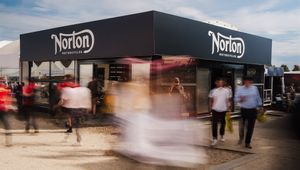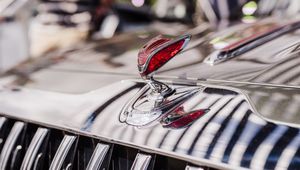
More Than a Quick Laugh: How Humour Supercharges Experiential Marketing (And How to Do It Properly)

The Christmas season is here and along with it, a much-needed dollop of joy.
We all need a bit of light relief at the end of a gruelling year. So, it’s no surprise to see humour playing a big part in holiday marketing 2024.
Humour works. Research from Oracle found about 72% of consumers would choose a humorous brand over its competitors. And the good news is that humour in marketing is making a comeback. In fact, 75% of UK and US Cannes Lions film award winners in 2024 used humour, up from 52% in 2023.
Now add that super-power to experiential.
Great experiential will always create memorable moments that forge genuine connections between brands and audiences. We know that in a world with over-saturated attention spans, the best way to truly stand out is to engage, delight and, most importantly, make people smile.
I recently ran a client workshop, naming no names, but it’s big in the beauty industry. When asked to list top five experiences of all time, the teams round the table named humour as the reason for their top picks. Humour doesn’t just sell. It sells well.
We listen hard to influencers, colleagues and friends and here are just a few ideas on why humour matters. With some practical tips on how ambitious brands can use it properly in experimental marketing.
The science bit!
Humour isn’t just about telling jokes; when we laugh, our brains release neurochemicals associated with pleasure and happiness. This positive emotional response doesn’t just feel good; it helps encode memories more deeply. For brands, this means humorous activations are not just engaging in the moment; they’re creating long-lasting impressions that keep the brand top of mind. And specific to experiential, this is supercharged with physically present brand assets – think PlayStation’s brilliant Transport for London takeover where console symbols appeared across tube stations, or the more recent Samsung flip phone takeover of (F)Old Street Station. Both delivered delight and smiles to the commuter/shopping journey and became hot topics of conversation.
Humour is a universal language: use it wisely
Humour breaks down barriers and builds bridges. When brands use humour effectively - it humanises them, creating trust and rapport. In experiential marketing, humour goes further – it makes us feel comfortable and engaged, turning us from passive observers into active participants. But here’s a big watch out: humour varies from one culture to the next. Cannes’ recent ‘Humour’ category drew much commentary around how some countries prefer dry sarcasm (the UK & Netherlands in particular) which may not translate globally. And, offends.
The right tone of humour matters: workshop it
The majority of brands instinctively avoid ‘laugh out loud’ humour, choosing a gentler sense of informality and approachability. Yet, given the sensitivity of humour, we’ve often found it ill-defined in brand guidelines … perhaps a sentence or two on TOV or socials.
In experiential, tone is key to getting it right. To get there, we’ve taken the route of flash workshops with clients to define humour for brand, using stimuli examples from gentle Economist style wit, through Tango slapstick, to BrewDog confrontation. There’s a lot of truth in the cliché – success is 90% preparation and 10% inspiration! Be prepared to work it through.
Humour drives shareable content
Experiential activations don’t end when the event is over; they live on through social media. Humour and play magically encourage people to pull out their phones and share engagement and experiences with their networks. At The Festival of Speed for example, we enhanced Randox Health’s FutureLab by gamifying the 116 bio-markers it tests for. Visitors stepped into a vertical wind tunnel with 30 seconds to catch all 116 balls. A simple idea for a serious healthcare issue, created with humour, that drew massive attention, high engagement and large-scale social sharing. Participants became advocates and the activation’s impact extended far beyond its original scope.
Practical tips for infusing humour into experiential campaigns
- Start with the brand’s personality and audience: Ensure humour aligns with the brand’s position, tone of voice and target audience.
- Use humour with a purpose: Humour is most effective when it serves a purpose, from highlighting a benefit to addressing a pain point in a light-hearted way. Top tip: make sure the humour doesn’t overshadow the brand’s core message or value proposition.
- Be aware of the risks: A joke that’s misunderstood or considered offensive quickly backfires, causing more harm than good. It’s critical for brands to strike a balance between being funny and being respectful. Humour must align with values, location and be inclusive to culture.
- Partner with experts: Consider collaborating with comedians, writers, or agencies that have used humour successfully in the past to help craft experiences that are genuinely funny and on-brand.
As comedian Victor Borge once said, “Laughter is the shortest distance between two people.” In experiential marketing, it might just be the shortest distance between a brand and its next loyal customer.















